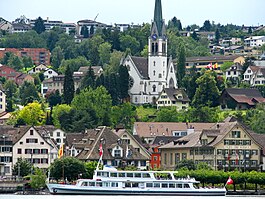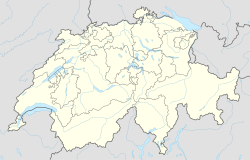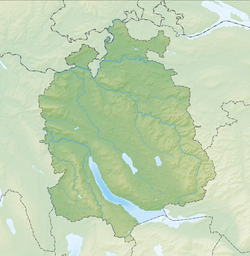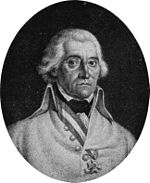
Männedorf is a municipality in the district of Meilen in the canton of Zürich in Switzerland.

Meilen is a municipality in the district of Meilen in the canton of Zürich in Switzerland.

Stäfa is a municipality in the district of Meilen in the canton of Zürich in Switzerland.

Horgen is a municipality in the district of Horgen in the canton of Zürich in Switzerland.
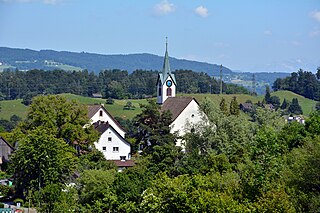
Langnau am Albis is a village in the district of Horgen in the canton of Zürich in Switzerland.

Kilchberg is a municipality in the district of Horgen in the canton of Zürich in Switzerland. Kilchberg is the site of a regional cemetery.

Rüschlikon is a municipality in the district of Horgen in the canton of Zürich in Switzerland. It is located on the west shore of Lake Zürich.
Horgen District is a district of Canton of Zürich in Switzerland. The district is located in the Zimmerberg and Sihl Valley region on the left shore of Lake Zürich; its district capital is Horgen. The district consists of 11 municipalities and has a population of 127,263 and an area of 104.16 km2 (40.22 sq mi).

Adliswil is a town and a municipality in the district of Horgen in the canton of Zürich in Switzerland.

Oberrieden is a municipality in the district of Horgen in the canton of Zurich in Switzerland. It is one of the towns along the south shore of Lake Zurich.

Uitikon is a village and municipality in the district of Dietikon in the canton of Zürich in Switzerland. Besides the village of Uitikon itself, the municipality includes the villages of Waldegg and Ringlikon.

Hirzel is a former municipality in the district of Horgen in the canton of Zürich in Switzerland. On 1 January 2018 the former municipality of Hirzel merged into the municipality of Horgen.

Hütten is a former municipality in the district of Horgen in the canton of Zürich in Switzerland. On 1 January 2019 the former municipalities of Hütten and Schönenberg merged into the municipality of Wädenswil.

Schönenberg is a former municipality in the district of Horgen in the canton of Zürich in Switzerland. On 1 January 2019 the former municipalities of Hütten and Schönenberg merged into the municipality of Wädenswil.

Wädenswil is a municipality located in the district of Horgen in the canton of Zürich in Switzerland. The population, as of 2013, was about 21,000. On 1 January 2019 the former municipalities of Hütten and Schönenberg were merged into the municipality of Wädenswil.

Bubikon is a municipality in the district of Hinwil in the canton of Zürich in Switzerland.

Samstagern is a village in the municipality Richterswil in the district of Horgen in the canton of Zürich in Switzerland. Hüttnersee is located in the village.

The Zimmerberg is a mountain and a region in the district of Horgen in the canton of Zurich, Switzerland. Its name comes from the Old High German word zimbar, meaning lumber.

The Zimmerbergbus is a bus network in the Horgen District in Switzerland, operated by the Sihltal Zürich Uetliberg Bahn (SZU) and its local partner firms: AHW Busbetriebe AG in Horgen, Busbetriebe Bamert GmbH in Wollerau, Leuthold Transfer AG in Horgen, and PostAuto Schweiz AG Region Zürich. The network is named after the Zimmerberg.

Sihl Valley is a river valley and belongs to the Zimmerberg-Sihltal region located in the district of Horgen in the canton of Zurich, Switzerland. Commonly Sihltal is used as the name of the Lower Sihl Valley, i.e. the area in the southwest of the city of Zürich.
